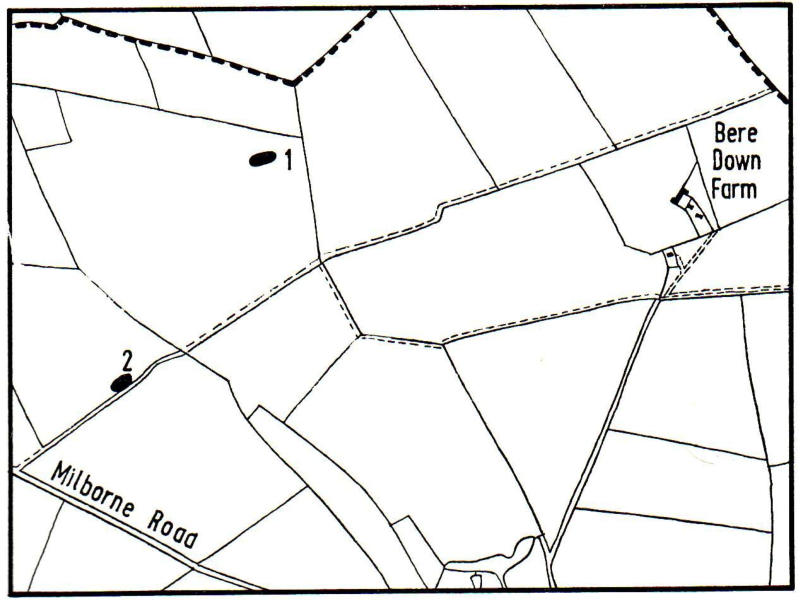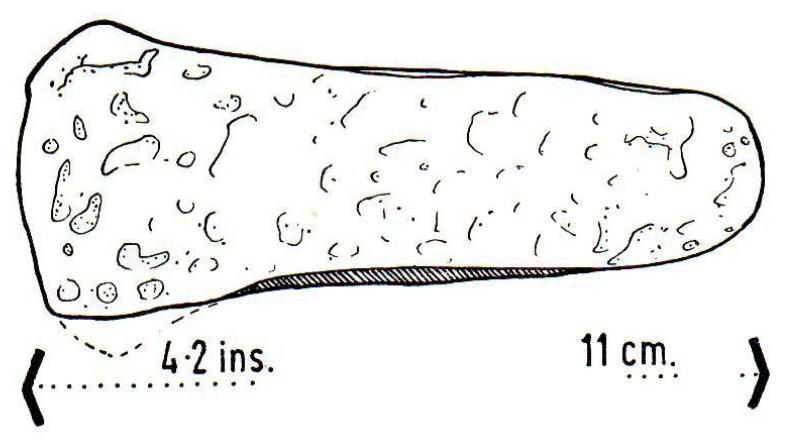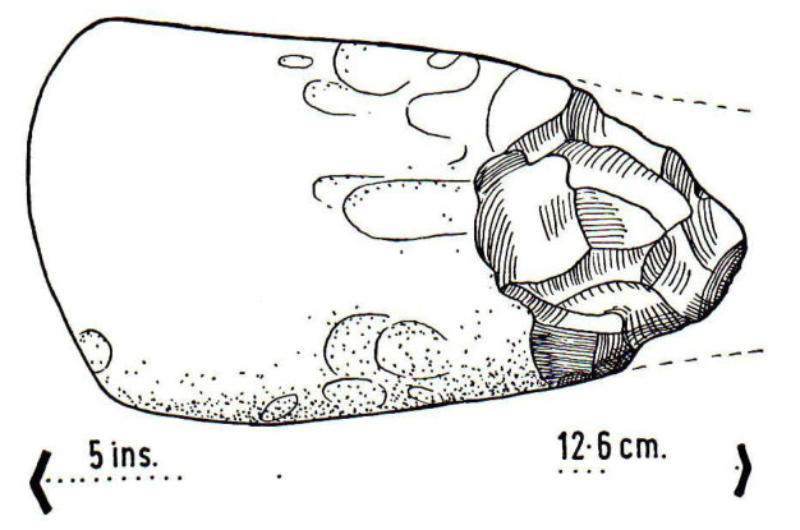It was formerly considered one of the best in Dorset, and of imposing dimensions, being 190 feet (57 metres) long, 40 feet (12 metres) wide, and an average of 8 feet (21 metres) high.
Another barrow, shown at point 2 on the drawing above, is designated a long barrow on current Ordnance maps, but its shape is indistinct, and it may be a round barrow of later date.
Three Neolithic axe heads are recorded as having been found in this parish.
The first was found at an unspecified spot in the river at Bere Regis in 1896, and is an axe head of green stone.
Look at the drawing of it below...





